Whitehot Magazine
November 2025
"The Best Art In The World"
"The Best Art In The World"
November 2025
Exhibition Review: "Homage: Queer Lineages on Video" at Wallach Art Gallery, Columbia University (on view through October 19, 2025)
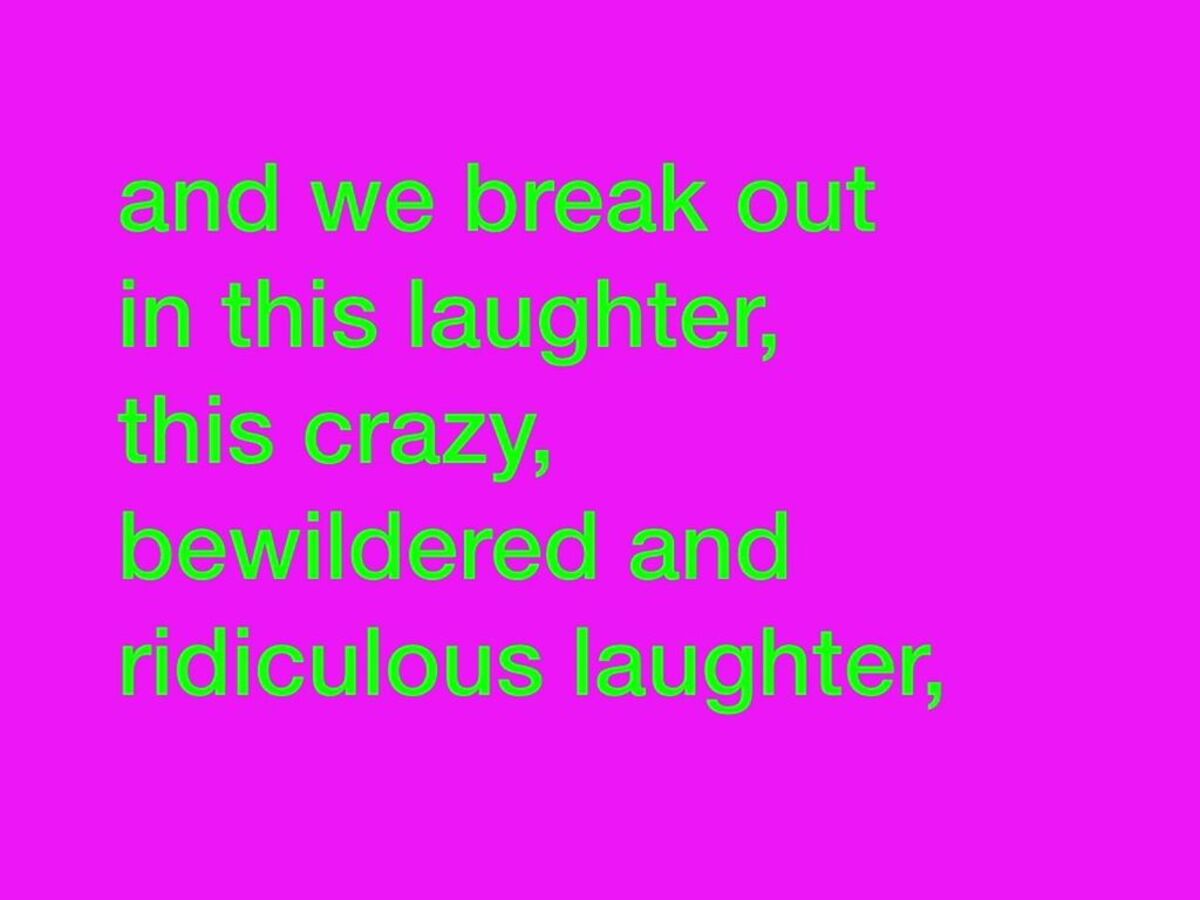 Tony Cokes, Excerpt from SM BNGRZ 1 + 2, 2021, two-channel HD video, color, and sound, 45 minutes and 48 seconds. Courtesy of the artist, Greene Naftali; Felix Gaudlitz, Vienna; Hannah Hoffman, Los Angeles; and Electronic Arts Intermix
Tony Cokes, Excerpt from SM BNGRZ 1 + 2, 2021, two-channel HD video, color, and sound, 45 minutes and 48 seconds. Courtesy of the artist, Greene Naftali; Felix Gaudlitz, Vienna; Hannah Hoffman, Los Angeles; and Electronic Arts Intermix
By LIAM OTERO October 3, 2025
God only knows how many exhibitions I’ve seen this year alone. The more shows I’ve seen - museum & gallery-scaled - the more cognizant I become of particular trends, developments, or events occurring in the Art World’s trajectory. The Wallach Art Gallery’s current exhibition, Homage: Queer Lineages on Video, was a timely reminder of the renewed interest and vigor of video art as a medium in 2025. With digital technology taking the reins in how moving image works are processed and disseminated, I had my concerns for the last few years about whether or not video art would become obsolete, or rather if there really could be such a thing as new video art in today’s screen culture. Thankfully, Homage begs to differ in denoting the new lease on life video is getting on contextual, formal, narrative, and functional grounds through a selection of 10 works by 7 artists made between 2005 and 2022. All the more fitting when considering the theme of Wallach Art Gallery’s current exhibition is about Queer History and Queer Temporality, both of which are important conceptual frameworks that have been a part of video art’s history from the beginning.
Curated by University of Michigan, Ann Arbor art historian & professor Rattanamol Singh Johal, Homage features works by 7 leading contemporary artists who each employ sight and sound to not only honor the legacies of important figures in recent queer history, but to also generate new perspectives and insights on queerness, community, resilience, and memory. In effect, this exhibition articulates how video's role in documentation, interpretation, and depiction bridges the queer past with the queer present - a total dismantling of heteronormative, linear time in preference for the alternative realm of queer temporality / queer time.
All 10 of the video works in this exhibition derive from the Akeroyd Collection, one of the most important repositories for the preservation of video, film, and moving image art.
The philosophies of media theorist Gene Youngblood's groundbreaking text Expanded Cinema (1970) is very much a linchpin to the curatorial direction of Homage as the entire exhibition space has been transformed into an immersive, multimedia environment that is part-gallery, part-theater, part-nightclub, and part-echo chamber. Each screened work is positioned in different sections of the gallery, which ensures that viewers are able to give their undivided attention to individual videos (the architecture of the space aids in balancing out the sounds from each video). Yet, wherever you stand or sit, the peripheral awareness of lights and sounds from neighboring works is an excellent reminder of the connectedness between the screened works as opposed to treating them as standalone videos.
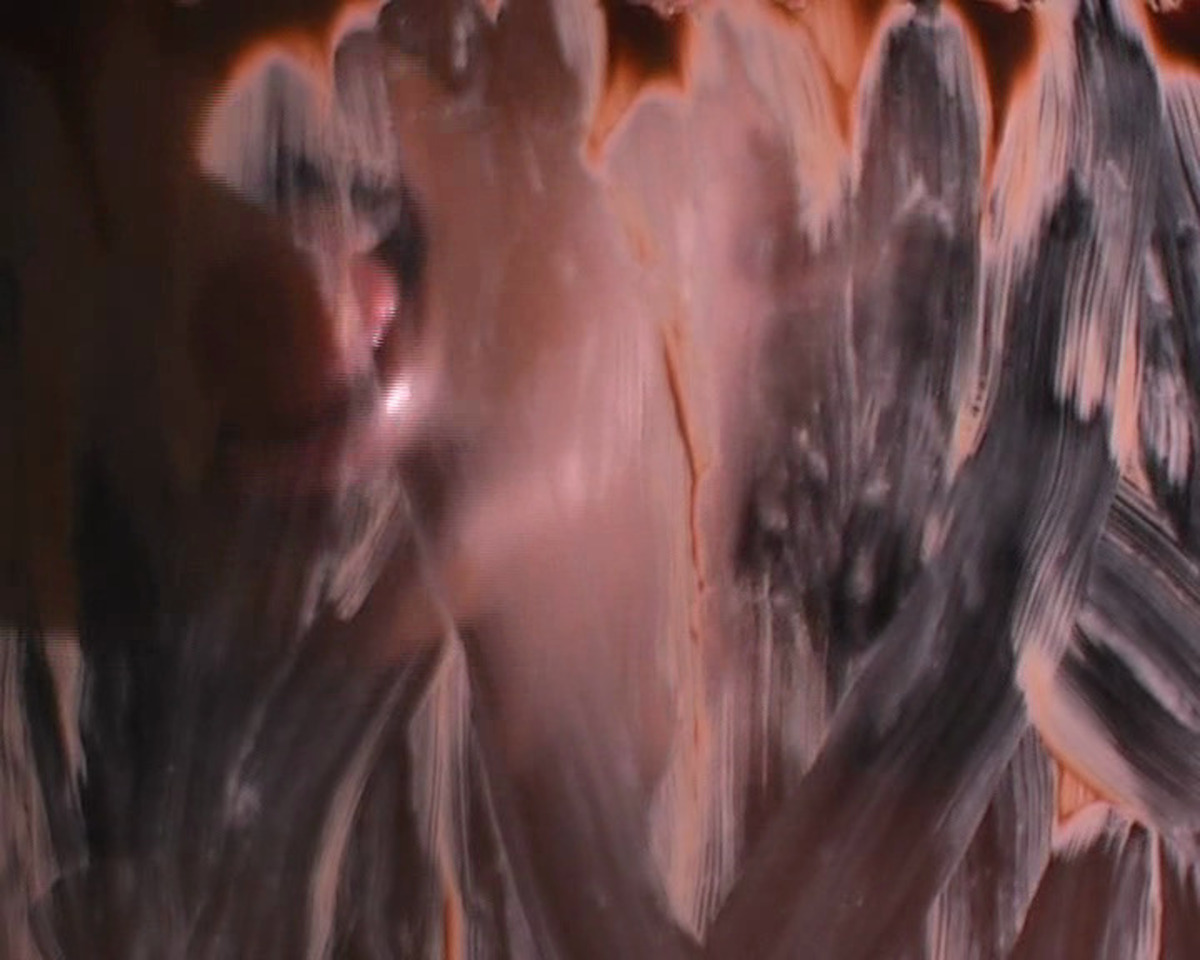 Dineo Seshee Bopape, a love supreme, 2005 - 2006, single-channel video, sound, 7 minutes and 51 seconds. Edition of 3 + 1 AP. © Dineo Seshee Bopape. Courtesy of Blank Projects
Dineo Seshee Bopape, a love supreme, 2005 - 2006, single-channel video, sound, 7 minutes and 51 seconds. Edition of 3 + 1 AP. © Dineo Seshee Bopape. Courtesy of Blank Projects
Bodily affirmation as a symbol of political resilience is proffered in South African artist Dineo Seshee Bopape's a love supreme (2005 - 2006) in which the artist, obfuscated by an opaque glass screen covered in chocolate, gradually licks away the thickly layered chocolate to reveal herself while John Coltrane's song of the same name plays in the background. Two things are occurring in this video: Bopape is slowly revealing herself, but there is also an element of distortion produced by the smears of chocolate and saliva over the glass. The sensual performativity of Bopape's oral gestures brings visibility to the black body while simultaneously underscoring the systemic erasure or overlooking of blackness (particularly as it intersects with gender & sexuality). Though I am not intending to go into a sequential ordering of the works in this review as there are a multiplicity of ways one may perambulate the space, it was a strong move to have this be the introductory work (and also the concluding piece since there is a single entrance) as its preoccupation with bodily presence and absence could be described as the ultimate link between all of the videos.
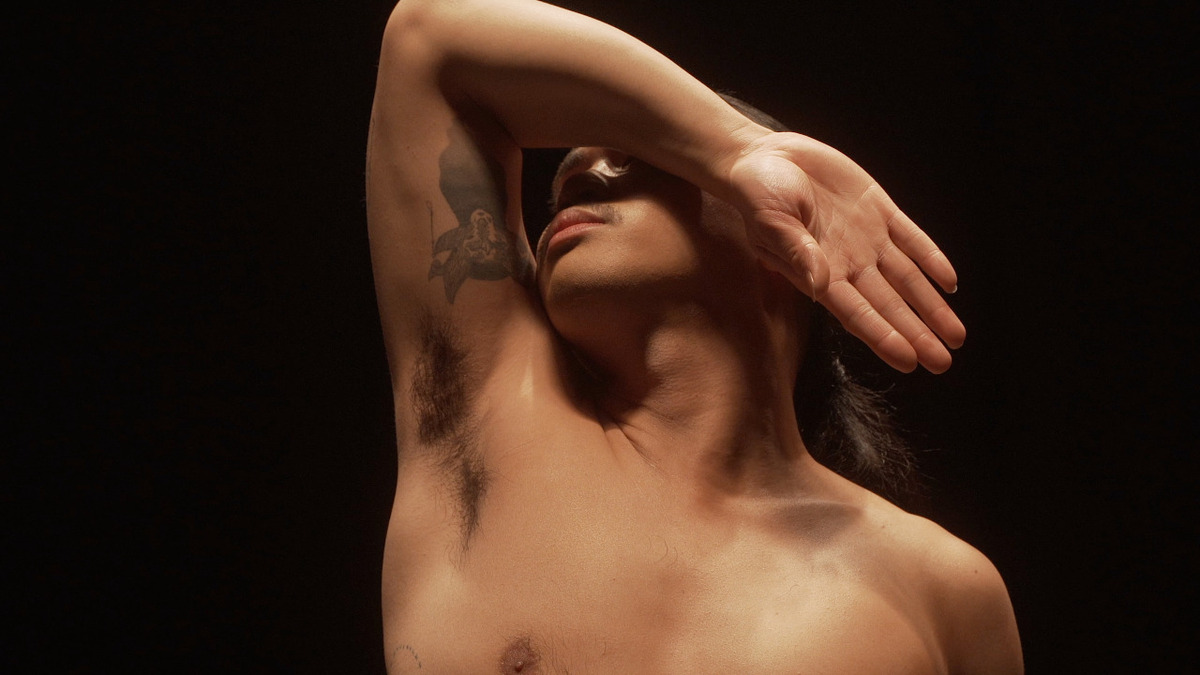 Kang Seung Lee, The Heart of a Hand, 2022, single-channel 4K video, color, sound, 13 minutes and 13 seconds. Edition of 5 + 2 APs. Commissioned by Vincent Price Art Museum, Los Angeles. Courtesy of the artist and Commonwealth and Council
Kang Seung Lee, The Heart of a Hand, 2022, single-channel 4K video, color, sound, 13 minutes and 13 seconds. Edition of 5 + 2 APs. Commissioned by Vincent Price Art Museum, Los Angeles. Courtesy of the artist and Commonwealth and Council
Music and dance come up again in a few other works that look to the liberating potential of theatrical or communal performance. South Korean multidisciplinary artist Kang Seung Lee's The Heart of a Hand (2022) is a tribute to the queer Singaporean dance choreographer Goh Choo San (1948 - 1987) who died of AIDS-related complications and was an accomplished ballet dancer affiliated with numerous dance companies spanning Washington, London, Amsterdam, New York, and Sydney. Having been overlooked for nearly four decades since his death, Lee's work is a contemporary adaptation of San's 1981 performance of Configurations as realized by the queer Filipino dancer Joshua Serafin's expressionistic, emotionally-charged movements, which are complemented by the sonic vitality of Seoul-based transgender composer & musician KIARA. This bridging of generations of dancers and choreographers could be poetically likened to the following quote from the queer-coded book & film, The History Boys: "The best moments in [performance] are when you come across something ... which you had thought special and peculiar to you ... And it is as if a hand has come out and taken yours."
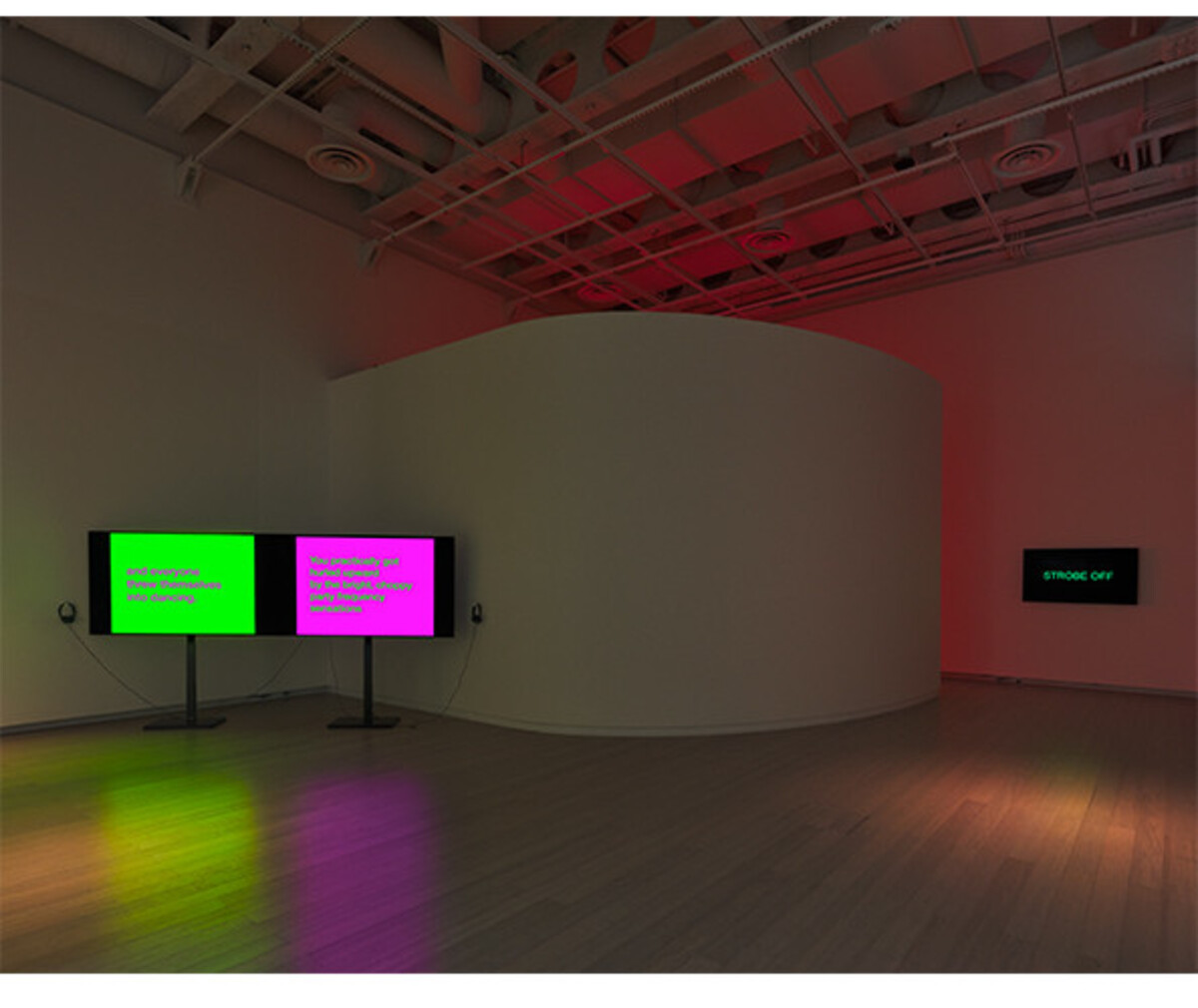
Installation view of Tony Cokes, SM BNGRZ 1 + 2, 2021, two-channel HD video, color, and sound, 45 minutes and 48 seconds.
American artist Tony Cokes's text & sound work, SM BNGRZ 1+2 (2021), applies music through a different lens in which the flashing of colorful text and monochromatic backgrounds sync with rhythmic rave music culled from dance tracks dating from 1988 to 2021. The on-screen text are passages from German novelist Reinald Goetz's book Rave (2020), which is set in the midst of the peak of the 90s techno-rave culture. Up through our present, nightclub and dance subcultures have been tied to queer liberation and resistance, from the underground ball scenes of Paris is Burning to today's overtly labeled queer-friendly spaces like the Park Slope bar, Good Judy.
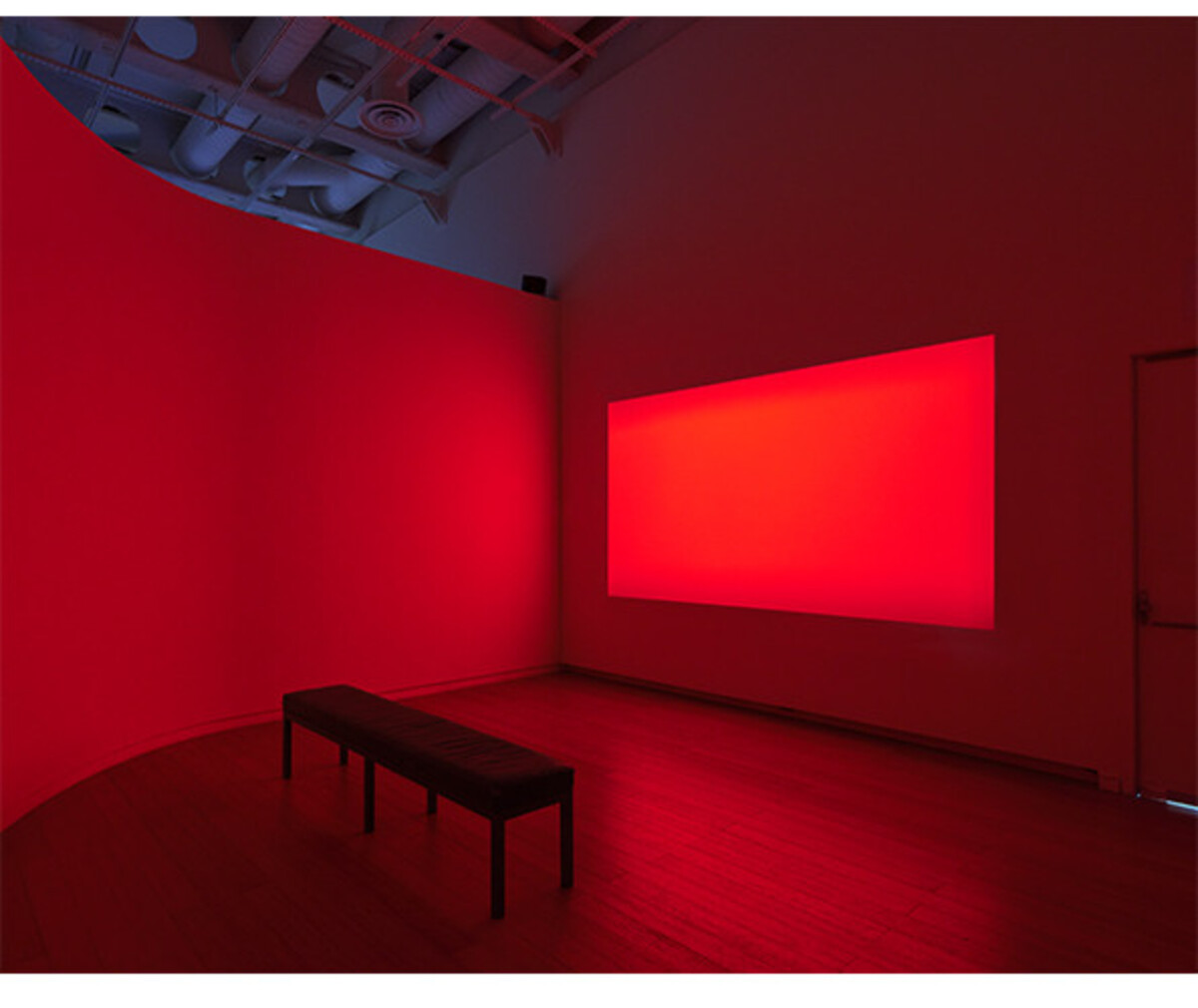 Carolyn Lazard, Red, 2021, two-channel video installation, 10 minutes and 15 seconds. Edition of 5 + 2 APs. Image courtesy of the artist and Trautwein Herleth
Carolyn Lazard, Red, 2021, two-channel video installation, 10 minutes and 15 seconds. Edition of 5 + 2 APs. Image courtesy of the artist and Trautwein Herleth
Carolyn Lazard’s Red (2021) embodies something of the flashy and camp atmosphere of Cokes’s video, but hers is more attuned to the parameters of structuralist filmmaking experimentation à la Stan Brakhage, Peter Kubelka, or Stan Vanderbeek. Similar to a nightclub setting, her video is kept in a spatial enclosure that becomes rapidly bathed in the glows of an onslaught of successive neon strobe lighting. This visual effect was the result of Lazard repeatedly tapping her finger over the lens of an iPhone camera. Every few moments, there is a kind of grace period where an onscreen countdown begins to announce the next sequence of strobing, which made for a respectful consideration of those who could visually be photosensitive to extreme atmospheric lighting. That level of care is intrinsically tied to the artist’s long-held investment in using her art to address the sufferings of chronic illness, a topic all too painfully connected to queer history and loss, from the AIDS epidemic in the 1980s to the disproportionately high suicide rates among LGBTQ+ youth today.
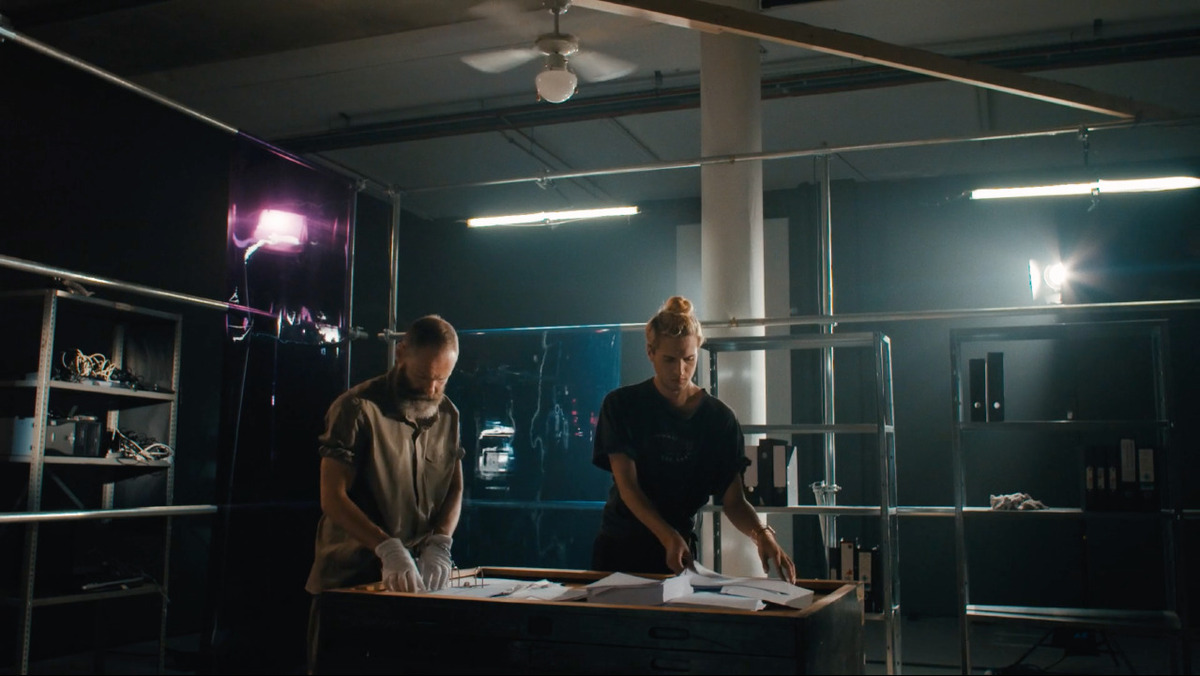 P. Staff, The Foundation, 2015, single-channel HD video, color, sound, 28 minutes and 20 seconds. Edition of 5 + 2 APs. Courtesy of the artist and Commonwealth and Council
P. Staff, The Foundation, 2015, single-channel HD video, color, sound, 28 minutes and 20 seconds. Edition of 5 + 2 APs. Courtesy of the artist and Commonwealth and Council
The British artist and filmmaker P. Staff’s The Foundation (2015) is a more cinematic documentary piece that is situated inside of a darkened corner whose all-black carpet, bench, and walls recall gay and S&M leather bars. This association isn’t a stretch to make as Staff’s film revolves around the legendary erotic artist Tom of Finland / Touko Laaksonen (Finnish, 1920 - 1991). However, Tom of Finland is not the principal subject behind this film, but rather the community of gay men who maintain the archives of the artist’s Foundation in Los Angeles. What’s inspiring about this initiative is that, like Lee’s choreographed performance, The Foundation is looking toward the ways in which collective kinship has been formed by individuals who share a common cause. Staff’s film is really an archival reflection of the archiving activities of the people who are keeping Tom of Finland’s legacy alive, but who are also applying those cultural strides toward new ends in contemporary art & culture.
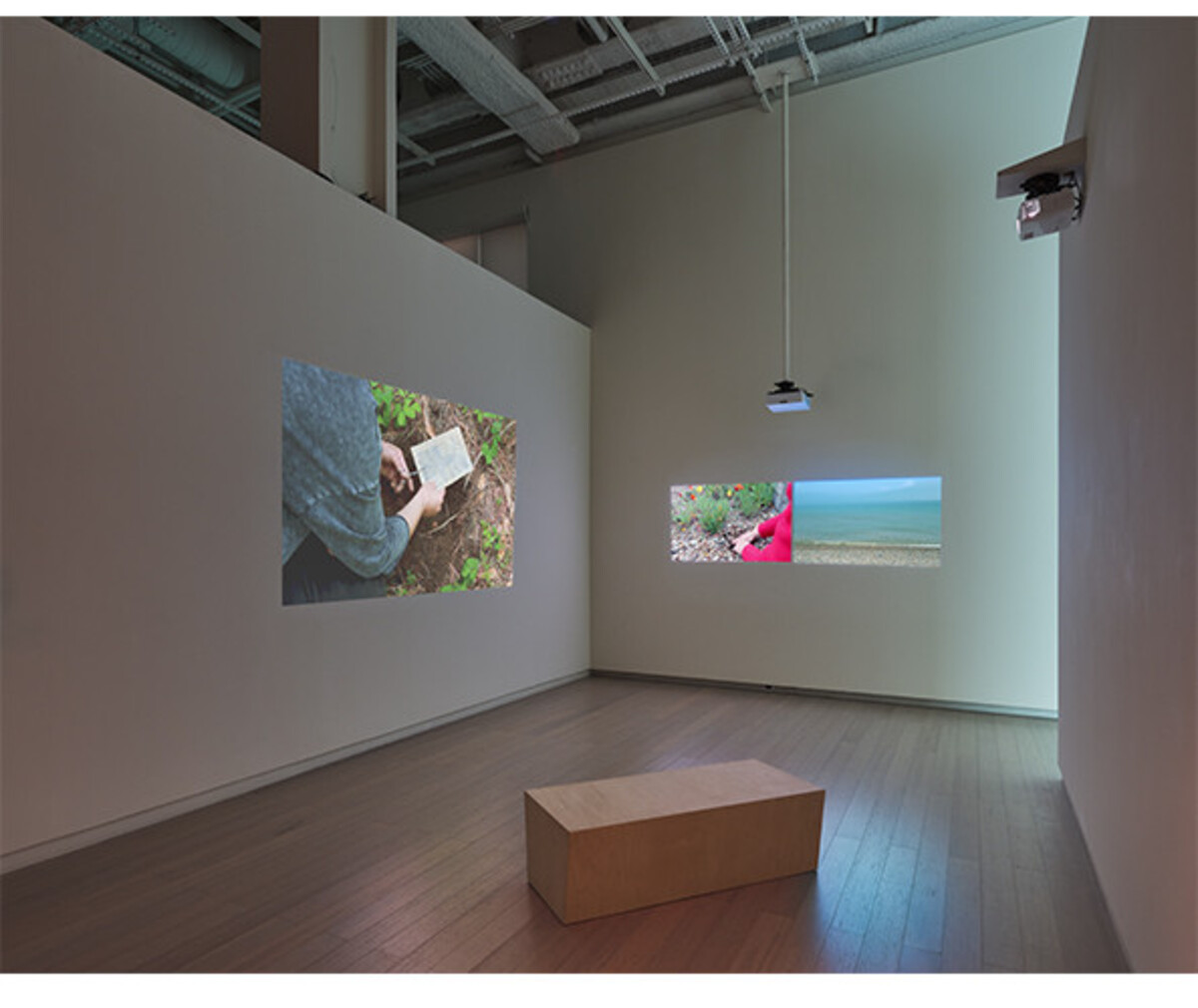 Kang Seung Lee, Garden, 2018, three-channel video installation, varied lengths (Seoul: 10 minutes and 46 seconds; Dungeness: 7 minutes and 45 seconds). Edition of 1.
Kang Seung Lee, Garden, 2018, three-channel video installation, varied lengths (Seoul: 10 minutes and 46 seconds; Dungeness: 7 minutes and 45 seconds). Edition of 1.
Conceptually, the exhibition’s energy gets evened out with two nature-focused works that quietly pay homage to queer icons. Kang Seung Lee’s two channel video screens for Garden (2018) honor the works of two major queer cultural figures who were contemporaries, but most likely either unconnected or unaware of one another’s existence, yet both succumbed to the same fate of AIDS-related complications: the English filmmaker & artist Derek Jarman (1942 - 1994) and the South Korean writer & activist Oh Joon-soo (1964 - 1998). Each video is a meditation in which Lee visits each figure’s personal garden and buries the torn remains of sheepskin parchment drawings created on-site into the soil. This all-but-silent act is a reverential expression that demonstrates how these sites are very much shrines to two similar figures who, at roughly the same time across two continents, attempted to create a better world for those who identified as queer in the face of hegemonic power structures.
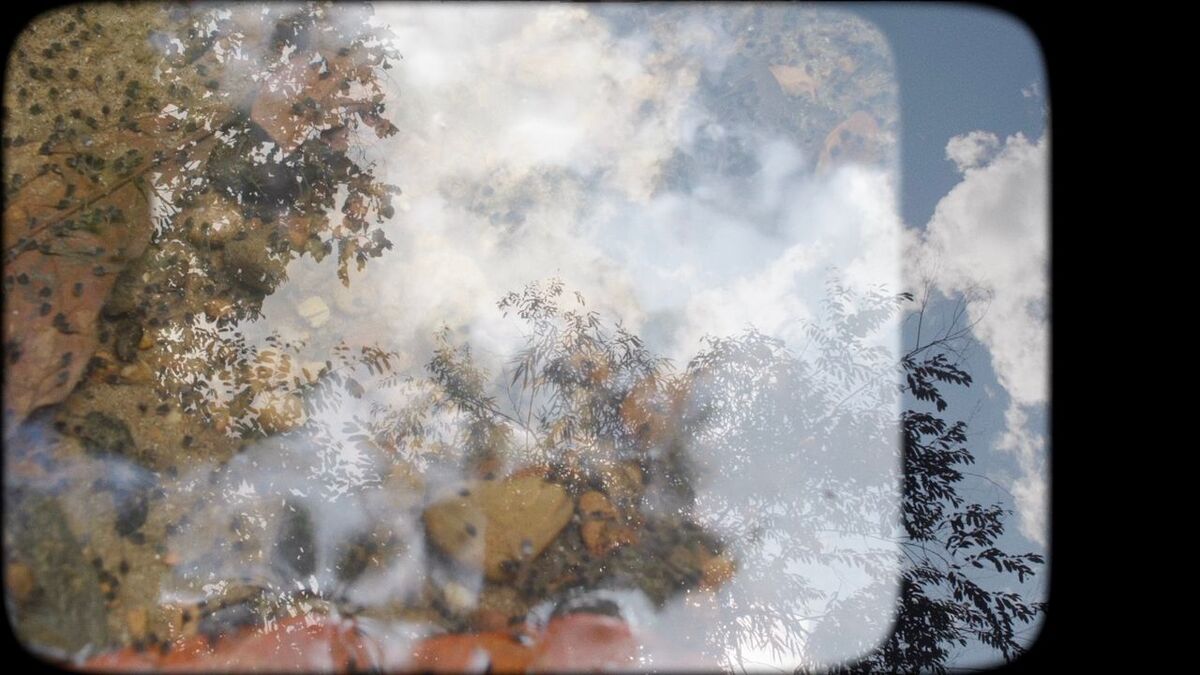 Apichatpong Weerasethakul, For Bruce, 2022, two-channel video, installation with two synchronized 4K videos, stereo, color, 18 minutes and 46 seconds. Edition of 5 + 2 APs. Courtesy of the artist and Kiang Malingue
Apichatpong Weerasethakul, For Bruce, 2022, two-channel video, installation with two synchronized 4K videos, stereo, color, 18 minutes and 46 seconds. Edition of 5 + 2 APs. Courtesy of the artist and Kiang Malingue
For Bruce (2022) is another tribute work to a deceased filmmaker, but this time a more recent subject, the American director Bruce Bailie (1931 - 2020). This video was created by Apichatpong Weerasethakul, an important figure in world cinema and is best known for bringing his native Thai cinema to the global stage with his 2010 film Uncle Boonme Who Can Recall His Past Lives. Our gaze is focused on a pond or puddle in which tadpoles and butterflies flutter about along with the passing reflections of clouds and trees and the distant sound of birds. The quietude of this somber meditation on the loss of the filmmaker Bailie seems to exert a wilderness solemnity akin to experimental filmmaker Peter Hutton’s (American, 1944 - 2016) modern silent film Study of a River (1997). It’s clearly more than just an introspective reminiscing, for Weerasethakul’s work wields a spiritual weight that transcends the material world with its timeless, looping recording of a tiny natural detail in which one can easily lose themselves upon prolonged viewing.
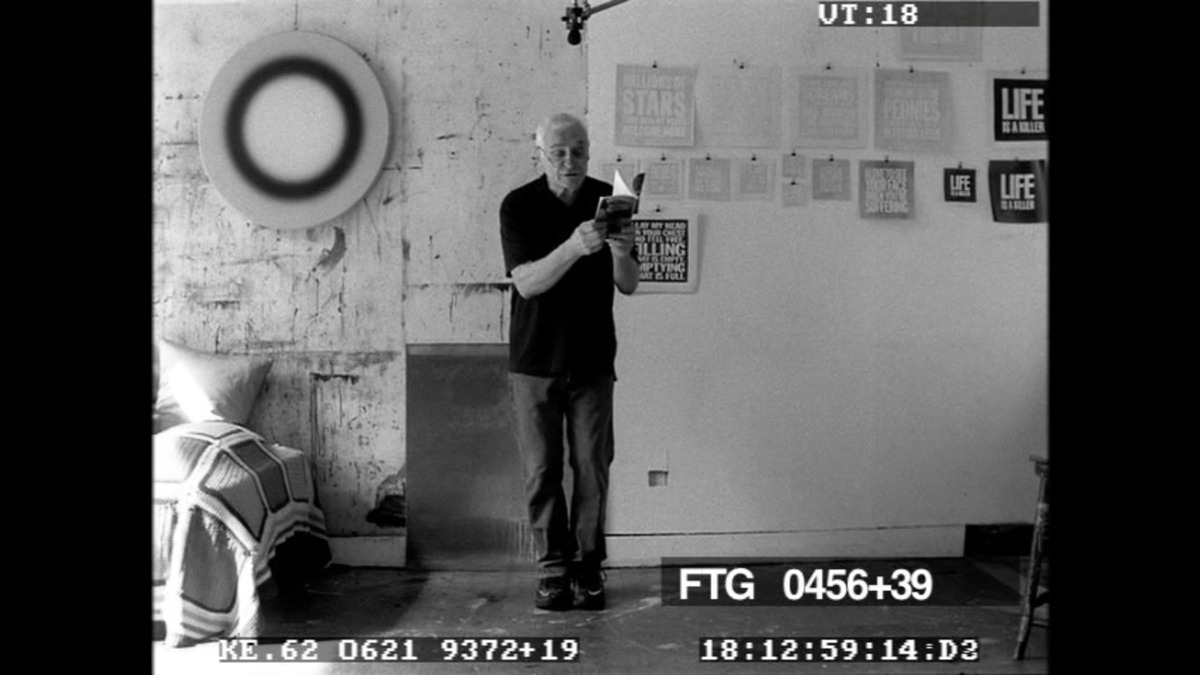 Rirkrit Tiravanija, Untitled (John Girono reads), 2008, black-and-white 16mm film with sound, 17 reels transferred to video, 10 hours and 6 minutes. Edition of 3 + 2 APs. © Rirkrit Tiravanija. Courtesy of the artist and Gladstone Gallery
Rirkrit Tiravanija, Untitled (John Girono reads), 2008, black-and-white 16mm film with sound, 17 reels transferred to video, 10 hours and 6 minutes. Edition of 3 + 2 APs. © Rirkrit Tiravanija. Courtesy of the artist and Gladstone Gallery
And lastly, another leading Thai artist, Rirkrit Tiravanija, has the sole work in the show whose composition is one of lengthy duration: the little over 10-hour work Untitled (John Giorno reads) (2008). Though not filmed in one continuous shot, this black-and-white 16mm work was produced from 17 reels in which the poet & performance artist John Giorno (American, 1936 - 2019) recites passages from his poems and memoirs that are bookended at different points by extended music recordings. The stage-like composition in which Giorno bellows out line after line makes the poet seem as if he were physically in our space and talking to us - a feeling reinforced by the projected scaling in which Giorno’s presence seems even more lifelike. Giorno, like many of the other queer icons highlighted in this show, is long gone, but Tiravanija’s lengthy video recordings helps to maintain the image and voice of one of the most important figures in mid-to-late 20th Century underground culture.
The 7 artists and 10 works in this show are stark reminders of the continued relevancy of video in telling stories, preserving histories & memories, and enacting potent social change. This is all the more significant when putting this exhibition in the context of a slew of recent developments in video art discourse - from the highly anticipated opening of the CANYON multimedia space on New York’s Lower East Side in 2026 to the Steina Vasulka exhibition at MIT from earlier this year. Further mention should be made that all of the works featured in this exhibition derive from the Shane Akeroyd Art Collection, a prestigious collection belonging to a figure hailed as one of the Top 200 collectors by ARTnews. WP










